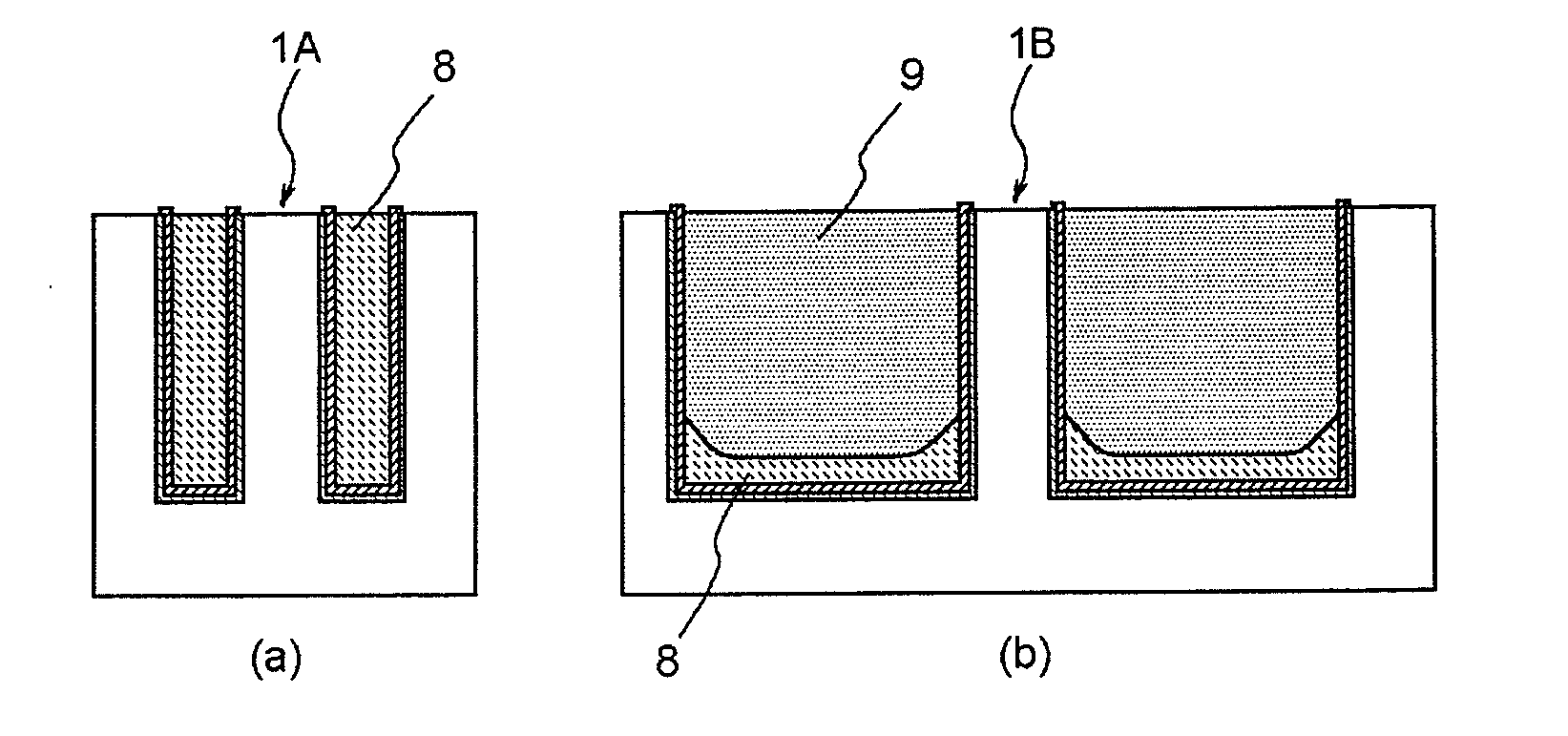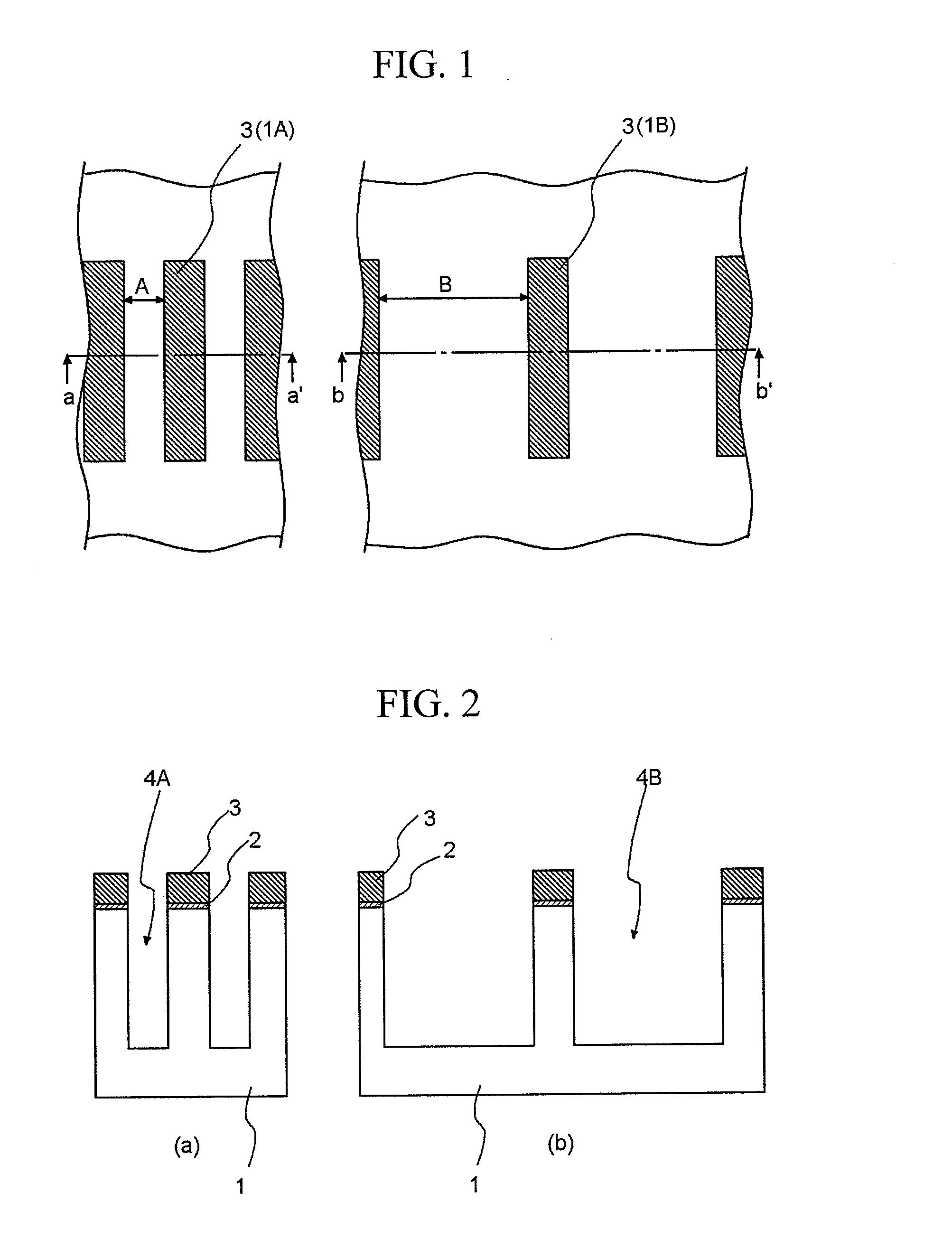Method for manufacturing semiconductor device
a manufacturing method and semiconductor technology, applied in semiconductor/solid-state device manufacturing, basic electric elements, electric devices, etc., can solve the problems of defective filling (voids), environmental harm, and restricted filling method in the sti for manufacturing semiconductor devices
- Summary
- Abstract
- Description
- Claims
- Application Information
AI Technical Summary
Benefits of technology
Problems solved by technology
Method used
Image
Examples
experimental example 1
Investigation of Overfilling Amount
[0041]Now, the aforementioned overfilling amount of the flowable silazane compound film 7 will be explained. The present inventors have performed an experiment in that the flowable silazane compound film 7 is formed by varying the overfilling amount, heat treatment including wet oxidation at 300° C. for 30 minutes, wet oxidation at 800° C. for 60 minutes and nitrogen treatment at 800° C. for 30 minutes is performed to convert the flowable silazane compound film 7 to the first silicon oxide film 8 and simultaneously perform a densification process, a planarization process by CMP is performed as described above, and an etching rate in wet etching is measured. The overfilling amount is set to 0 nm (that is, the height of the upper surface of the flowable silazane compound film 7 over the first isolation trench is the same as the height of the upper surface of the liner silicon nitride film 6 on the silicon nitride mask film 3), 50 nm and 300 nm. Forma...
experimental example 2
Investigation of Heat Treatment Temperature
[0042]The present inventors have studied a heat treatment temperature. The study is conducted on the heat treatment temperature of a high temperature for densification. Test samples are formed by depositing the flowable silazane compound with the overfilling amount of 50 nm and then heat-treating with a first wet oxidation (first stage heat treatment) at 300° C. for 30 minutes, subsequent a second wet oxidation (second stage heat treatment) at temperatures shown in FIG. 11 for 60 minutes, and the third heat treatment for 30 minutes at the temperature same as that of the second wet oxidation under an inert gas atmosphere. In addition, the comparison of the test samples is carried out using a silicon oxide film formed by HD-CVD as a control. The results of the comparison are shown in FIG. 11. As shown in FIG. 11, the wet etching rate becomes lower as the heat treatment temperature rises. As aforementioned, the required thickness of the liner ...
PUM
| Property | Measurement | Unit |
|---|---|---|
| height | aaaaa | aaaaa |
| temperature | aaaaa | aaaaa |
| temperature | aaaaa | aaaaa |
Abstract
Description
Claims
Application Information
 Login to View More
Login to View More - R&D
- Intellectual Property
- Life Sciences
- Materials
- Tech Scout
- Unparalleled Data Quality
- Higher Quality Content
- 60% Fewer Hallucinations
Browse by: Latest US Patents, China's latest patents, Technical Efficacy Thesaurus, Application Domain, Technology Topic, Popular Technical Reports.
© 2025 PatSnap. All rights reserved.Legal|Privacy policy|Modern Slavery Act Transparency Statement|Sitemap|About US| Contact US: help@patsnap.com



